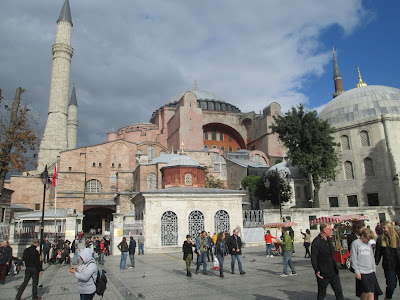2016 begins with more voluntary groups which add value to local
life coming under pressure, a pattern reflected here in 2012 and again in 2014.
Abbey Walk Gallery, the one independent arts venue in North
East Lincolnshire, is to close, with the loss of exhibition space, artists’
studios and small retail outlet (one of the few carrying my own book of poems). It was never making money (it only appears
to have survived because the two dynamic people running it never took any money
out of it for themselves) and exhibition space continues to be used at the National
Fishing Heritage Centre – but Grimsby will be much poorer without it. North Lincolnshire seems to manage this all slightly
better with both the large 20-21 Visual Arts Centre at the top of the main shopping
street in Scunthorpe and the Rope Walk on the waterfront at Barton, although we
were told a short while ago that the latter is mainly financed by its very
successful restaurant.
Green Futures, the community business in this parish which
operates the former Council nursery and supplies our weekly veg box, is
appealing for the £15 000 it needs to keep going through the last weeks of this
financial year. Among its great
strengths is the way it involves some of those who find (re)entering employment
difficult, so forebodings about what it would then be able to continue to do in
the financial year 2016-7 are serious.
It is a fragile and rare symbol of fresh possibilities (both ‘green’ and
human) which it would be impoverishing to lose.
Shoreline, the not-for-profit organisation which owns the
former Council Houses in North East Lincolnshire, is having to make cuts and
redundancies which include ending grants to the local Citizens’ Advice Bureau
and a major Credit Union. The loss of
these grants repeats a pattern which has worried me for some time – the major
austerity moves removing lifelines from precisely the small voluntary groups
which people imagined would take up some of the strain. Shoreline’s decision here is probably
inevitable (its money needs to be invested in its core purpose) but one can’t
help feeling that the loss of robust advice and credit management support for
its less able tenants could in fact result in higher levels of arrears,
evictions and homelessness, all of which would cause misery and cost Government
more in the long run.
My 'new year resolution' is to seek ways in which our over stretched churches can do more in
these sorts of areas of human flourishing in 2016, but I've failed to follow through so many existing 'priorities' in 2015 that I think success is doubtful.
Meanwhile, the three Bishops in this diocese sent out a
Christmas card which is a photograph of themselves, and my picture above is the
play of light in Lincoln Cathedral noticed when I was there to preach at
Evensong on the Sunday before Christmas.

















































